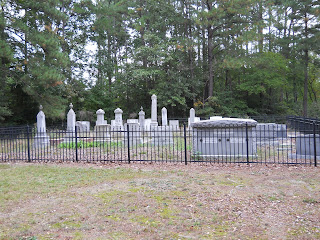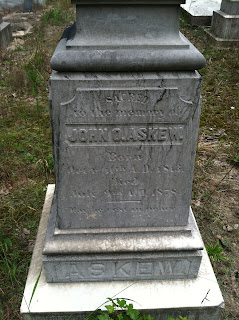I have recently discovered that my ancestors were
involved in the Quaker movement from England to the English colony of
Virginia. This is another discovery that
possibly illuminates one of the reasons that my ancestors came to Virginia.
First some background on the Quaker movement …
originally known as the Religious Society of Friends. During the English Civil Wars, George Fox pulled together groups of disparate seekers that formed the Religious Society
of Friends in 1647. He targeted "scattered Baptists,"
disillusioned soldiers, and restless commoners as potential Quakers.
Confrontations with the established churches and its leaders was inevitable as
the Quakers believed that God could speak to average people, through his risen
son, without the need to heed churchmen,
pay tithes,
or engage in deceitful practices. They found fertile ground in northern England in 1651 and 1652, building a base there from which
they moved south, first to London and then beyond. Fox also established a more
equal role for women, which served both to isolate the opposition and fuel
discontent. Despite the survival of
strong patriarchal elements, Quakers believed in the spiritual equality of
women, who were allowed to take a far more active role in the church.
Two acts of English Parliament made it particularly
difficult. The first was the Quaker Act of 1662, which made it illegal to refuse to
take the Oath of Allegiance to the King and country. The second act was the Conventicle Act of 1664,
which reaffirmed that holding secret meetings by people who did not pledge
allegiance to the country was a crime.
An early leader of the movement was George Fox’s
wife, Margaret Askew Fell Fox, also known as the ‘Mother of Quakerism’.
She was born Margaret Askew in Dalton-in-Furness,
a small town in the north of England, where the Askew family originated. She
had married Thomas Fell in 1632, and became
the lady of Swarthmore Hall.
Thomas Fell had served as a Justice of the Peace for Lancashire County, England
and in 1645 was a member of Parliament. He
died in 1658 leaving Margaret Askew a widow.
In late June 1652, George Fox visited
Swarthmoor Hall. Margaret stated of George Fox, he 'opened us a book that we
had never read in, nor indeed had never heard that it was our duty to read in
it (to wit) the Light of Christ in our consciences, our minds never being
turned towards it before.' Later, she invited George Fox to preach at
their local parish. Over the next weeks
she and many of her household became convinced. Over the next few years,
Swarthmoor Hall became a center of Quaker activity
and Margaret served as an unofficial secretary for the new movement. She wrote many epistles herself,
as well as, collected and disbursed funds for those on missions. After her
husband's death in 1658, she retained control of Swarthmore Hall, which
remained a meeting place for Quakers and haven from persecution, even though it
was sometimes, in the 1660s, raided by government forces.
In 1664 Margaret Fell was arrested for failing to
take an oath and for allowing Quaker meetings to be held in her home. She
defended herself by saying that "as long as the Lord blessed her with a
home, she would worship him in it". She was sentenced to life imprisonment
and forfeiture of her property. She remained in prison until 1668, during which
time she wrote religious pamphlets and epistles. Perhaps her most famous work
is "Women's Speaking Justified", a scripture-based argument for
women's ministry, and one of the major texts on women's religious leadership in
the 17th century. Margaret bases her argument for equality of the sexes on
the basic premises of Quakerism that is spiritual equality. Her belief was that
God created all human beings; therefore both men and women were capable of not
only possessing the ‘Inner Light’ but also the ability to be a prophet.
After her release from prison she married George Fox
in 1669. On returning to Lancashire after her marriage, she was again
imprisoned for about a year in Lancaster for breaking the Conventicle Act. Shortly after her release,
George Fox departed on a religious mission to America, and he too was
imprisoned again on his return in 1673. Margaret again traveled to London to
intercede on his behalf, and he was eventually freed in 1675.
Margaret spent most of the rest of her life at
Swarthmore Hall. After the death of George Fox in 1691, she continued to take an
active part in Quaker affairs. She died at
the age of 88. One has to think that she
was probably inspired by the Protestant Martyr, Anne Askew, possibly a distant
ancestor of Margret.
One also has to believe that she was possibly
related to the Askew’s that migrated from England to the Isle of Wight in
Colonial Virginia during the mid 17th Century.
Studying Isle of Wight history … I have discovered a strong Quaker
connection. The oldest group of Quakers
in Virginia settled in the southeast corner of Virginia (e.g. Norfolk, Isle of
Wight Co. etc.) and date to the time of arrival of the earliest Askew’s to the
Virginia Colony. This group of Quakers spread from Southeast Virginia into the
northeast corner of North Carolina. It is also interesting that the Askew
family migrated from Southeast Virginia to Northeast North Carolina.
George Fox visited Isle of Wight in 1672. From George Fox’s journal, “On the 5th
we set sail for Virginia, and in three day’s came to a place called Nancemond …
Next day we had a great meeting there of Friends and others.” He continues, “Another very good meeting also
we had at William Yarrow’s at Pagan Creek which was so large that we were fain
to be abroad.” One of the largest
meeting houses of the Quakers in Virginia was located at Pagan Creek in Isle of
Wight and located near John Askew’s property.
His journal goes on to mention ‘kinsmen’ attending these meetings … could
these ‘kinsmen’ have been Askews?
The Quakers were also persecuted in Virginia. In 1659 the Virginia General Assembly passed
a law against the Quakers, fining 100 lbs. sterling to any ship's master who
brought in Quakers and prison terms were imposed on Quakers who refused to
leave the colony. This caused church members to flee to a colony to other
locations such as the Maryland colony.
In Virginia, the authorities refused to accept Quaker marriages as legal, and
they were fined for fornication. For this reason, there are very few records of
the first converts to the church. It was not only until 1688 that the Religious
Toleration Act was passed.
Due to these acts many of the Quaker’s that remained
in the Virginia colony probably held their religious beliefs in secret … which
may be why it is difficult to positively identify these early Virginia Askews
as tied to the movement; but, considering their possible connection to Margaret
Askew Fell Fox, their timeline of arrival in the Virginia Colony, and their
close proximity to the Isle of Wight Quakers, it is possible that my ancestors
were tied to the Quaker movement as one of their reasons or means for migrating
to Virginia in the mid 17th century.
 |
| Margret Askew |
 |
Society of Friends' burial ground in
Sunbrick, Urswick, England Margaret's resting place
|


















.bmp)
p1.jpg)

.JPG)

.JPG)

















.jpg)








